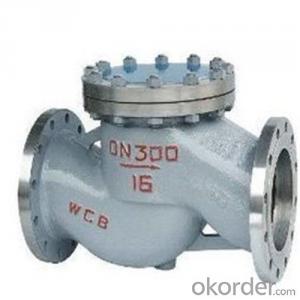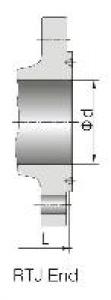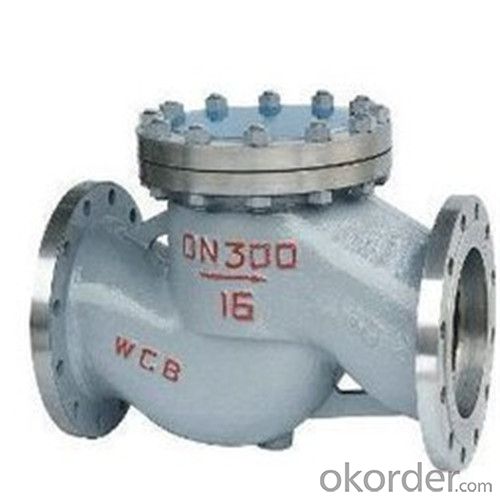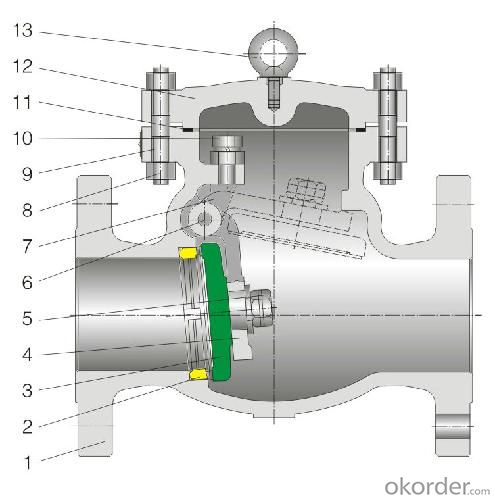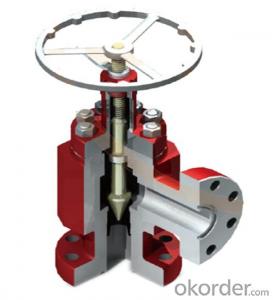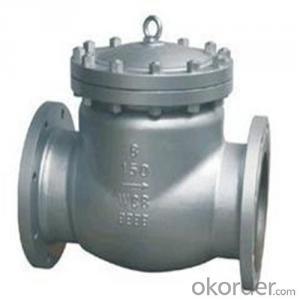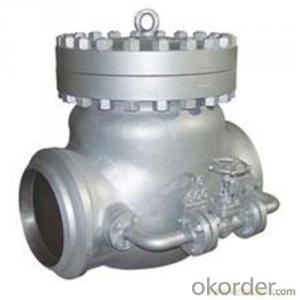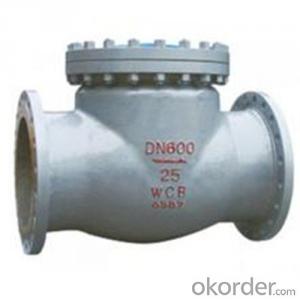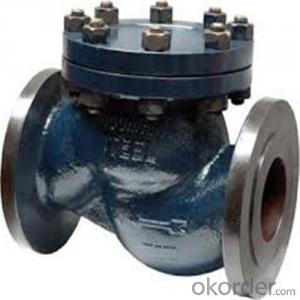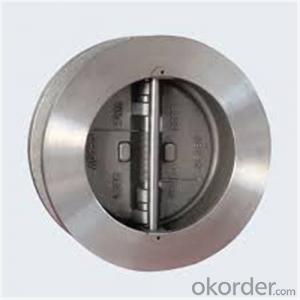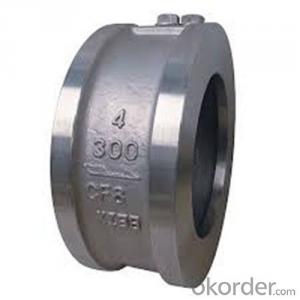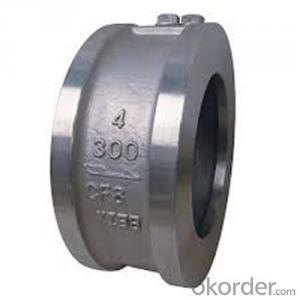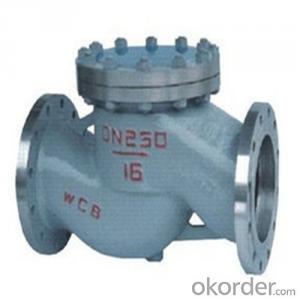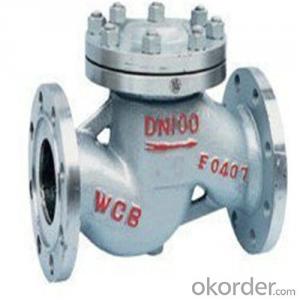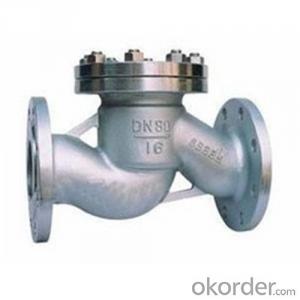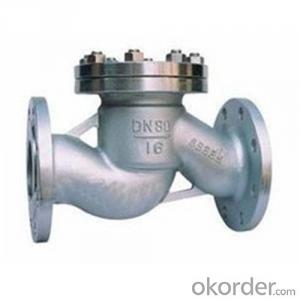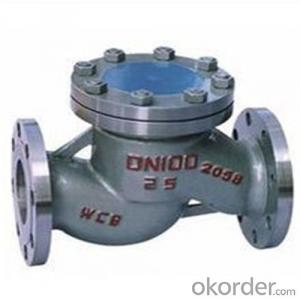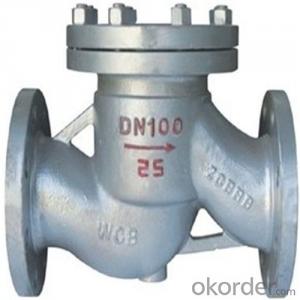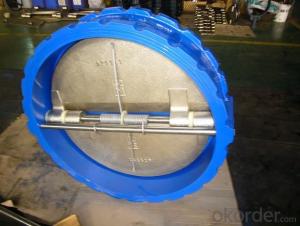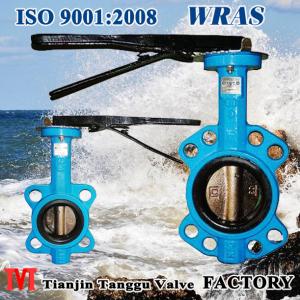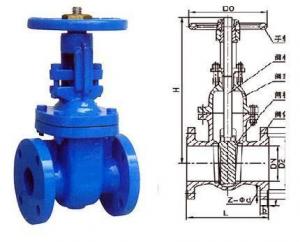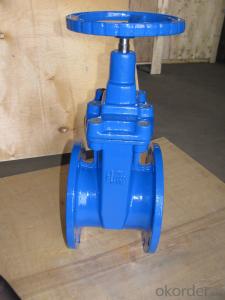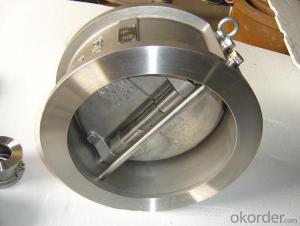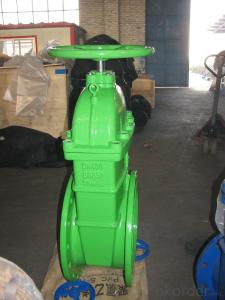API Cast Steel Lift Check Valve Size 750 mm
- Loading Port:
- Shanghai
- Payment Terms:
- TT OR LC
- Min Order Qty:
- 10 pc
- Supply Capability:
- 100 pc/month
OKorder Service Pledge
OKorder Financial Service
You Might Also Like
API Cast Steel Lift Check Valve 150 Class
The features of Cast Steel Lift Check Valve
Bolted Bonnet;Swing and lift disc;Metallic seating surfaces.
Body and Bonnet Connection of Cast Steel Lift Check Valve:
The body and bonnet of Class150~Class900 check valves are usually with studs and nuts.And the body and bonnet of Class1500~Class2500 check valves are usually of pressurized seal design.
Body-To-Bonnet Joint of Cast Steel Lift Check Valve:
Stainless steel + flesible graphite wounded gasket is used for Class 150 and Class 300 check valve;Stainless steel + flexible graphite wounded gasket is used for Class 600 check valve,and joint gasket is also optional for Class 600 check valve;Ring joint gasket is used for Class900 check valve;Pressurized seal design is used for Class 1500~Class 2500 check valves.
Seat of Cast Steel Lift Check Valve:
For carbon steel check valve,the seat is usually forged steel.The sealing surface of the seat is spray welded with hard alloy specified by the customer.Renewable threaded seat is used for NPS<10 check="" valves="" and="" welded="" on="" seat="" can="" be="" also="" optional="" if="" being="" requested="" by="" the="" customer.welded="" is="" used="" for="" nps="">12 crbon steel gate valves .Forstainless steel check valve,integral seat is usually adopted ,or to weld hard alloy directly integrally.Threaded or welded on seat is also optional for stainless steel check valve if being requested by the customer.
Parameter of Cast Steel Check Valve:
Standard Criteria | ASME/ANSI/API customize |
Pressure Rating | 150 Class 300 Class 600 Class 900 Class 1500 Class 2500 Class customize |
Valve Size | 50 mm 65 mm 80 mm 100 mm 125 mm 150 mm 200 mm 250 mm 300 mm 350 mm 400 mm 450 mm 500 mm 600 mm 650 mm 700 mm 750 mm |
2 inch 2.5 inch 3 inch 4 inch 5 inch 6 inch 8 inch 10 inch 12 inch 14 inch 16 inch 18 inch 20 inch 24 inch 26 inch 28 inch 30 inch customize | |
Actuator | Automatic customize |
Connection | Butt Welding Flange RF Flange RTJ customize |
1-Body Material | A216 WCB A351-CF8 A351-CF8M customize |
2-Seat ring | A351-CF8 A351-CF8M A105+13Cr Tool Steel+A105 customize |
3-Disc | Tool Steel+A216 WCB A351-CF8M A351-CF8 A216 WCB+13Cr customize |
4-Arm | A351-CF8 A216 WCB A351-CF8M customize |
5-Nut | A194 8M A194-8 A194 2H customize |
6-Arm pin | A182-F6a A182-F316 A182-F304 customize |
7-Yoke | A351-CF8 A351-CF8M A216 WCB customize |
8-Bonnet nut | A194 8M A194-8 A194 2H customize |
9-Bonnet bolt | A193-B8 A193-B8M A193-B7 customize |
10-Bolt | A193-B7 A193-B8 A193-B8M customize |
11-Gasket | graphite+304 graphite+316 customize |
12-Bonnet | A216 WCB A351-CF8M A351-CF8 customize |
13-Eye bolt | A181 customize |
Design Standard | API 6D BS 1868 customize |
Connection Standard | API 605 ASME B 16.25-2007 ASME B 16.47A ASME B 16.47B ASME B 16.5 MSS SP-44 customize |
Test Standard | API 598 API 6D customize |
Face to Face | ASME B 16.10 customize |
Pressure-temperature ratings | ASME B 16.34-2004 customize |
Wall thickness dimension | API 600 BS 1868 |
FAQ of Cast Steel Check Valve:
Q1:I can’t find the type of steel check valve which I need. what can I do?
The chart above only lists out some common composition of steel check valve parts.We may provide other different parts material composition according to the customer's request or the actual valve working condition.
Q2:Which certification do your products pass?
Our products are in accordance with ISO 9001、ISO 14001、API 6A、API 6D、TS CE、API607/6FA/BS6755.
- Q: please i want theory of MOTORIZED VALVE ? COURSE TITLE : MEASUREMENT AND CONTROL EXP. TITLE : CALIBRATION AND CHARACTERISTICS OF MOTORIZED VALVE
- Limitorque Co. has been a leader in the valve motorization field for decades. Here (below) is one of several web sites where you can find their conventional and modern control techiques.
- Q: my valves got dirty long story how do you clean them
- Remove the valves, wash them and the horn in warm (NOT hot) water with liquid dish soap. Dry with a clean towel, then oil and reassemble.
- Q: i went to the heart doc today to get the results from an echocardiogram and he told me i had two leakages in one of the valves of my heart. i dont know why, but i didnt even bother to ask him exactly what that meant because he told me it was nothing to worry about. can anyone tell me more about this?
- Hum...it depends how bad your leakage is. If it causes too much blood to flow in the wrong direction it could cause an enlarged heart. What lead up to you having an echocardiogram? My son has has epstines malformation of the tricuspid valve and it caused leakage. It depends on the level of the leakage. It can be a big issue but obviously your leakages are small and nothing to be concerned with? I would def. call him and get some clarification....
- Q: Last year an echo revealed severe aortic valve regurgitation with low ef of 37 but ecg was normal. i am 36 yrs old. I have noticed that i often have chest pain when i lie on my left (especially after a heavy drinking or if my bp is high) but the pain subsides when i lie on my right or back. Is it possible that my aortic valve only leaks when i lie on my left side, if so, can I continue living a normal life without needing valve replacement surgery if avoid lieing on my left side. or i'm i fooling myself, is the heart damage progressing silently?
- Hello, You don't tell us *why* your doctors think, you developed this problem with your aortic valve in the first place? Has there been any infection of the valve with germs, (bacterial endocarditis)? Did you have Rheumatic Fever as a child? Were you born, with stenosis or regurgitation of your aortic valve? Do you have abnormally early, clogging-up of your artery-linings with cholesterol?
- Q: Hi, I am a junior in high school and I play the trumpet. For the past week or so my 1st valve has been odd. It gets stuck badly when it hits all the way to the bottom, and I can't seem to get it to stop. Normally when valves are sticky I just use some valve oil and it helps a lot. But it doesn't seem to work this time. It is a Bach if that helps. I think there are other types of valves so I'll say that there is a spring inside from like the middle to top. If you could help me out that would be great! Thanks =)
- Instead of valve oil, try kerosine. This is no joke. I found that kerosine cleans the **** out of the valves, and makes for smoother valve action. Put about a 1/2 pint in to a a peanut butter jar, and you can let the valves soak a for a few seconds before you put them back in. i got this tip from a trumpet player who played professionally in a dance band.
- Q: I got a cold air intake installed on my vehicle and don't have any AEM bypass valve installed, for preventing hydrolock. If I drill a small hole(e.g 1cm) on the intake(short ram section) can that prevent hydrolock or do I still have to get one of those bypass valves?I'm looking for any alternatives, instead of those AEM bypass valves and was wondering if drilling a small hole in the cold air intake could help in preventing hydrolock, just as good as the AEM bypass valve.
- This would not need a bypass valve. Short answer, NEVER drill holes in your intake behind the filter.
- Q: i disconnected the heater valve because it went bad, but when i removed it i forgot how it came off when i went to the auto parts store. i just need to know what way it should be facing and which hose goes where? can someone please help me?
- Heater control valve at heater core? If so the valve is horizontal with the vacuum motor on bottom, the vacuum port pointing towards rear of engine. The heater hoses for heater core are obvious, the hoses from the engine, the hose closest to the valve cover goes to the drivers side of the valve, the hose that wraps around from the front of the engine goes to the passenger side of the valve.
- Q: i wanna know the role of TOP ENTRY in this definition it's difference with side entry valve.
- Top Entry Ball Valve
- Q: does a 1975 chevy pickup 2wd has a proportioning valve? If so how does it work and the signs it is bad? my truck has disc/drums brakes?
- Yes The valve causes your rear brakes too apply before the front brakes .Safety reasons,(If your fronts apply first chances are the rear of the vehicle could come around on you) It utilizes spring pressure and offset valving. There is a rubber button that you must depress to bleed the rear brakes It's an override.
- Q: How do you take out a valve stem?
- no, the cap for the valve stem is designed to keep dirt out not hold air in ! there is a special tool that removes the valve stem, and some manufacturers have cleverly placed it on the top of the stem cap(so you would remove the cap ,turn it upside down and the metal tool will fit into the valve and unscrew the stem.), otherwise you can get one at the tire dealer or SEARS ,It's about the size of a pencil
Send your message to us
API Cast Steel Lift Check Valve Size 750 mm
- Loading Port:
- Shanghai
- Payment Terms:
- TT OR LC
- Min Order Qty:
- 10 pc
- Supply Capability:
- 100 pc/month
OKorder Service Pledge
OKorder Financial Service
Similar products
Hot products
Hot Searches
Related keywords
